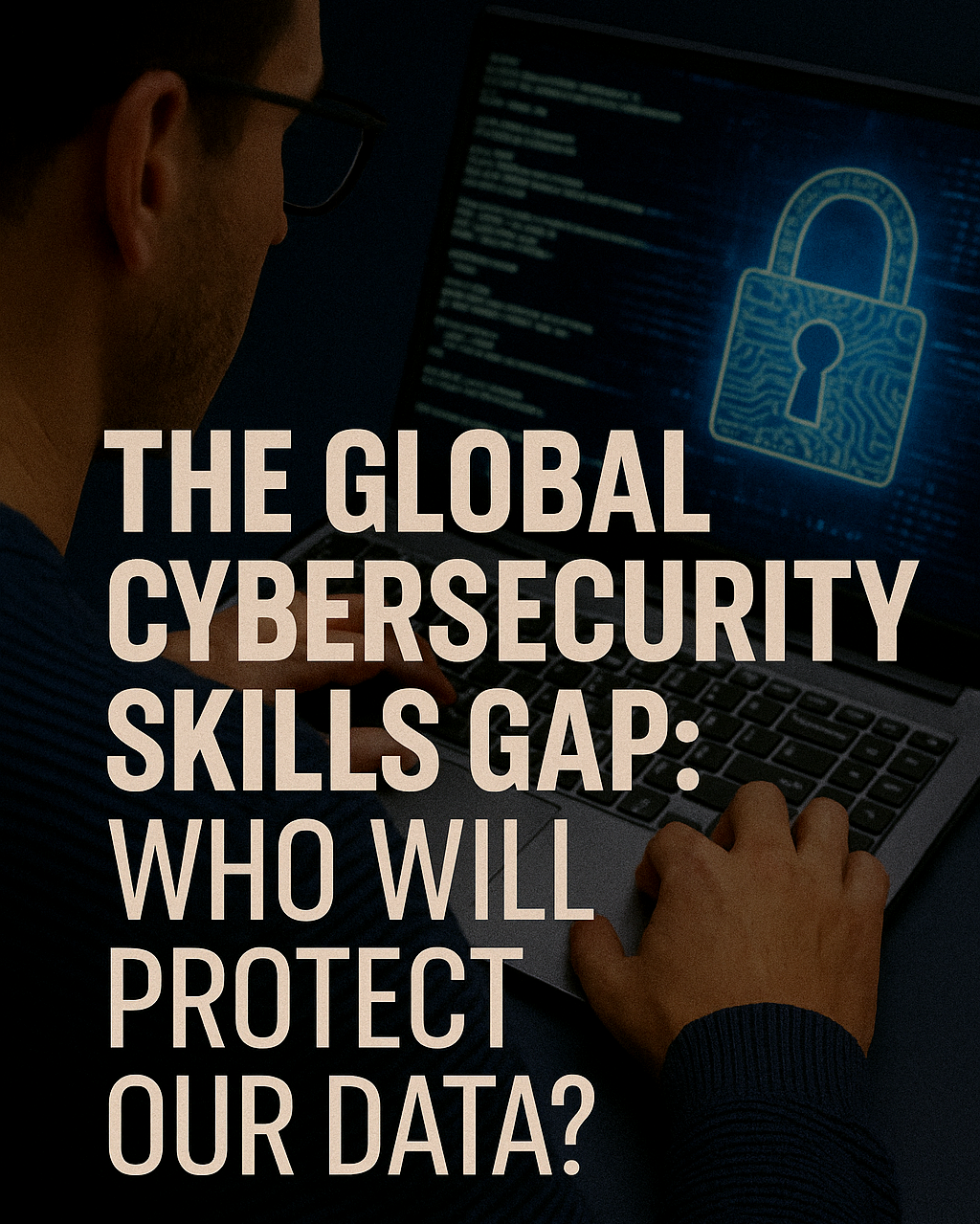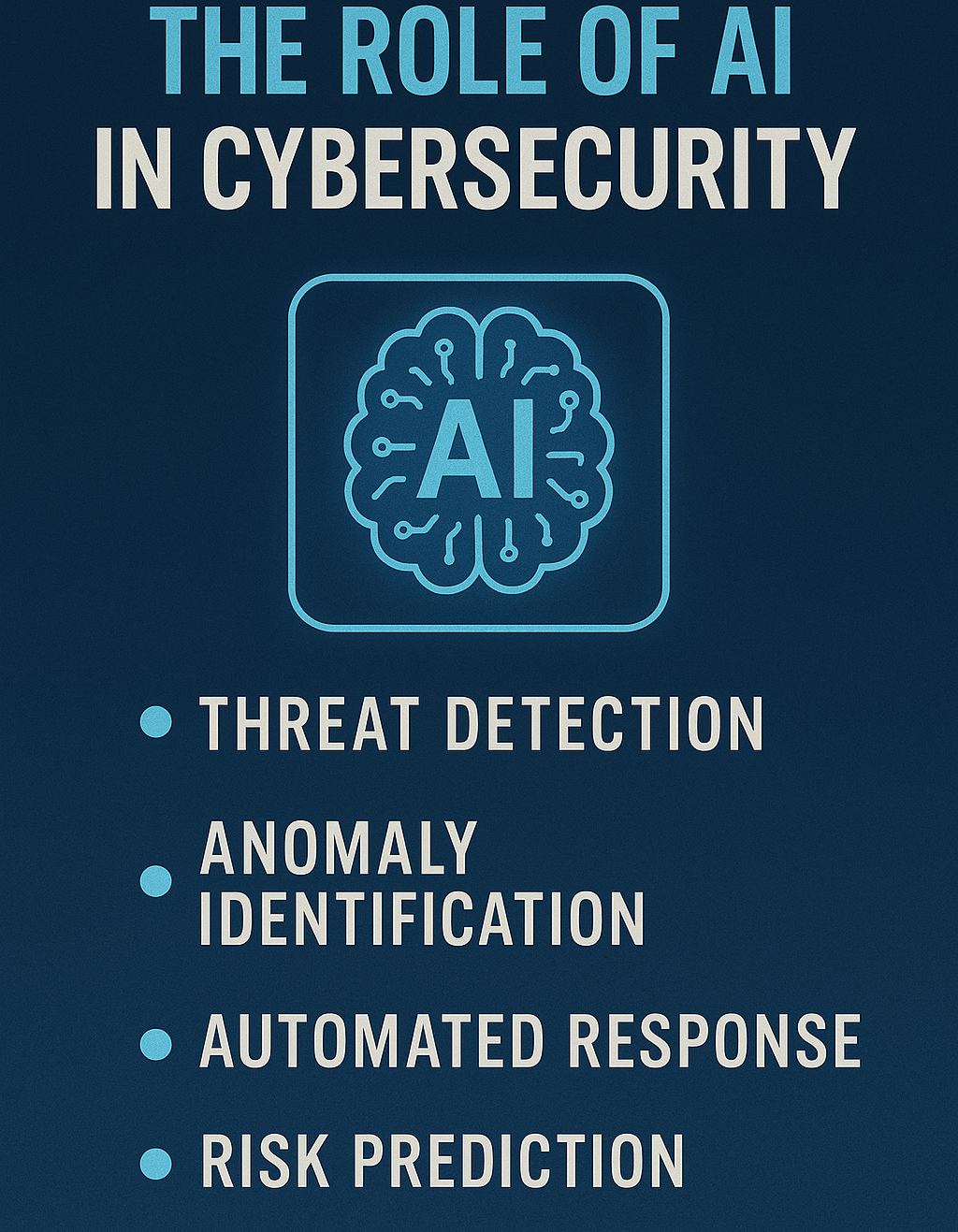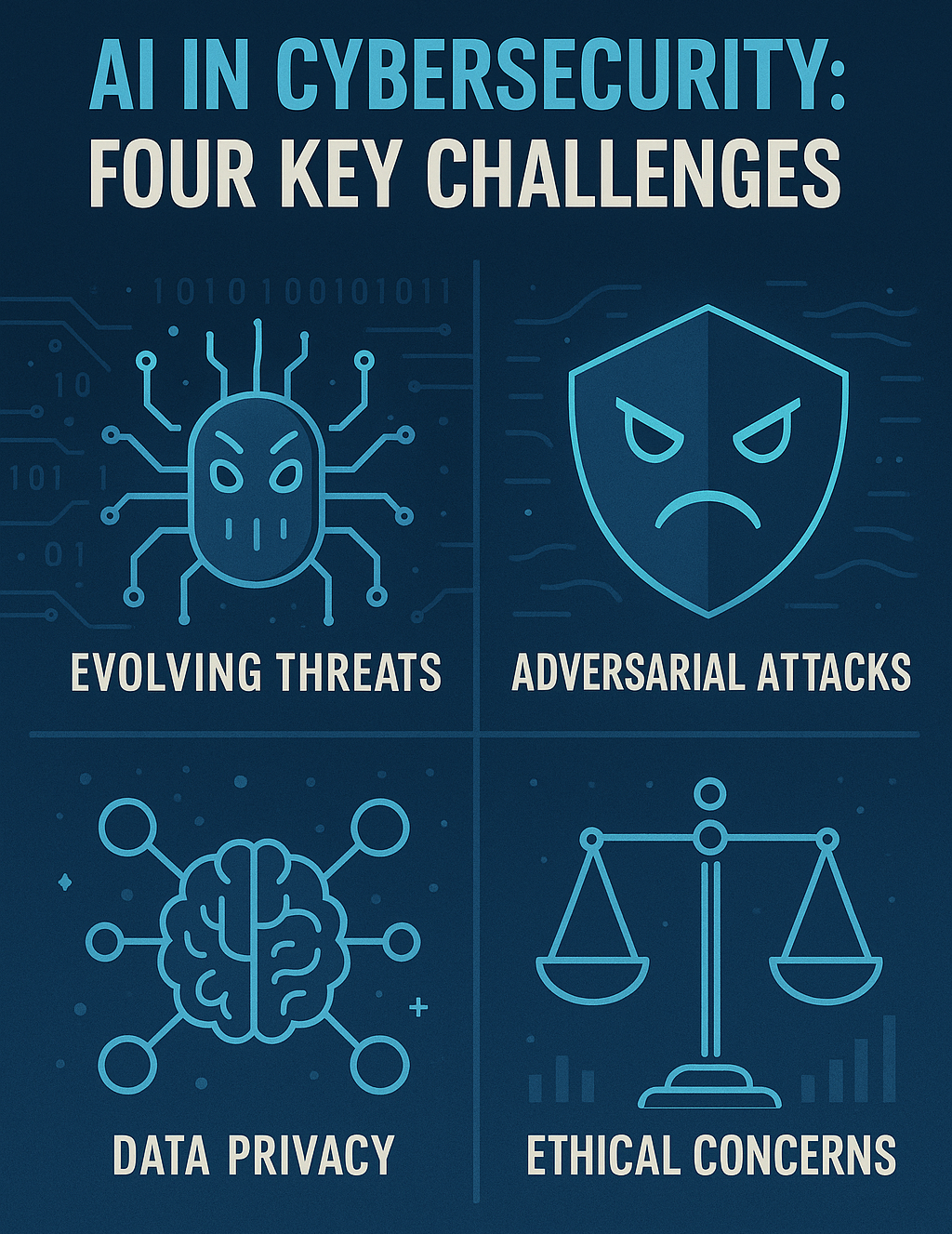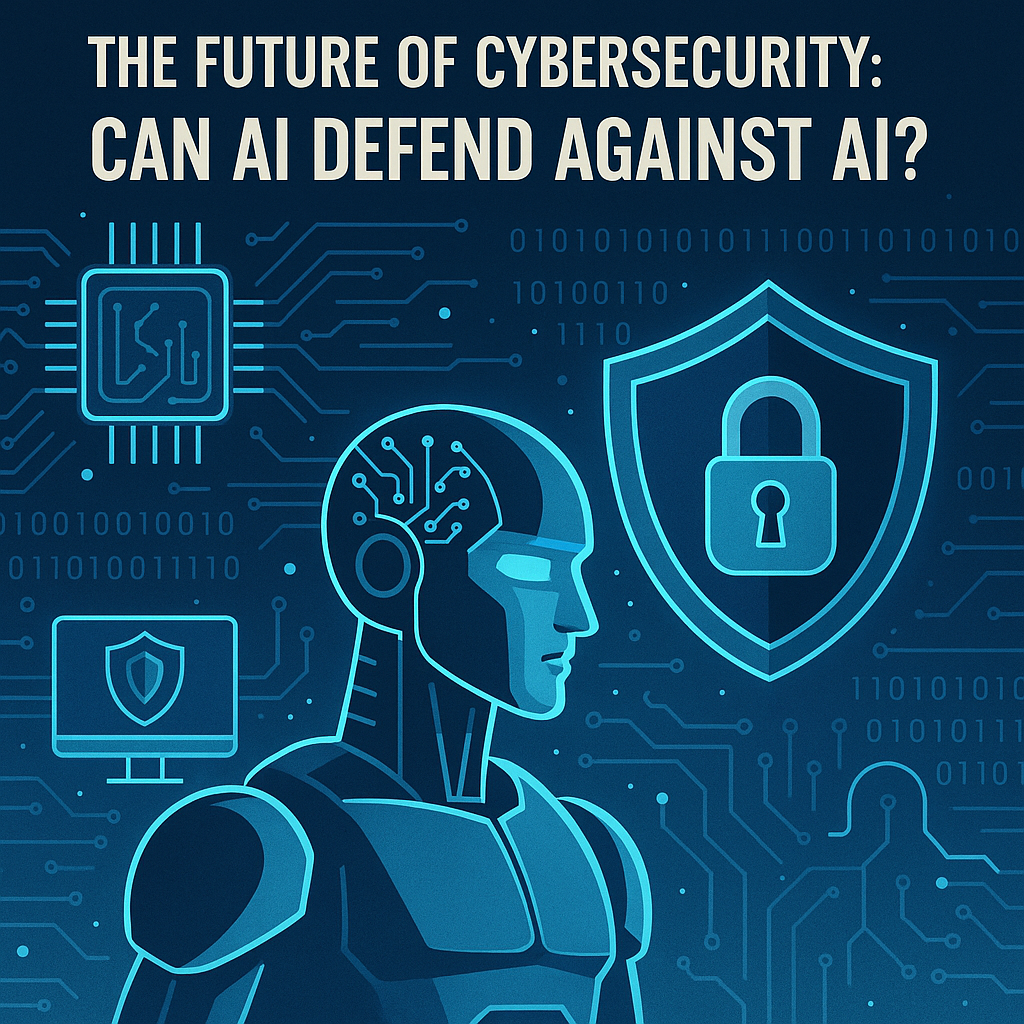The Future of Cybersecurity: Can AI Defend Against AI?
Explore the AI cyber arms race. AI is now both the ultimate weapon for hackers and the essential shield for defense. Unpack generative AI threats, zero-trust models, and how to defend against AI-crafted attacks in the future of cybersecurity.

Written by Lavanya, Intern, Allegedly The News
PALO ALTO, CA, July 31, 2025
An invisible war is raging across our digital infrastructure. It’s not fought with soldiers or tanks, but with algorithms and data. On one side, artificial intelligence is being forged into a sophisticated weapon, capable of crafting attacks with unprecedented speed and precision. On the other hand, AI is our most promising shield, a sleepless sentinel tasked with defending against its own kind. This is the new reality of cybersecurity: an escalating arms race where the line between offense and defense is drawn in code, and the future of our digital world hangs in the balance.
The New Arsenal: How AI Empowers Cybercriminals
The evolution of cyberattacks has been relentless. We’ve moved from simple viruses to complex ransomware, and now, we stand at the precipice of AI-driven threats. Malicious actors are no longer just lone hackers in dark rooms; they are increasingly sophisticated, state-sponsored groups and organized criminal enterprises leveraging AI to automate and scale their operations.
AI-Crafted Phishing and Synthetic Media: Phishing emails were once easily identifiable by their poor grammar and generic greetings. Today, generative AI tools can craft perfectly tailored, context-aware phishing emails that mimic the writing style of a trusted colleague or a CEO. These AI-crafted emails can reference recent projects, personal details gleaned from social media, and use flawless language, making them nearly impossible for even tech-savvy users to detect. This threat is amplified by synthetic media, or deepfakes. Imagine receiving a video call from your CFO, with their exact likeness and voice, urgently requesting a fund transfer. This isn't science fiction; it's a growing vector for identity theft and corporate fraud, connecting digital vulnerabilities directly to real-world financial loss.
Generative AI and Malicious Code: The same large language models (LLMs) that assist developers can also be used to write malicious code. While platforms like OpenAI have safeguards, threat actors are constantly finding ways to jailbreak these systems or develop their own unregulated models. An attacker with minimal coding knowledge can now prompt an AI to generate polymorphic malware code that changes its signature with each infection to evade traditional antivirus software. This dramatically lowers the barrier to entry for creating sophisticated cyber weapons.
Exploiting the Internet of Things (IoT): Every smart thermostat, camera, and connected car is a potential entry point into our networks. Billions of these devices are active worldwide, many with poor default security settings and irregular patching schedules. Hackers use AI-powered scanners to constantly probe the internet for these vulnerable IoT devices, marshaling them into massive botnets like the infamous Mirai botnet, capable of launching crippling Distributed Denial of Service (DDoS) attacks that can take down entire websites or corporate networks.

The Digital Shield: AI as the Modern Cybersecurity Defender
As attackers weaponize AI, the defense must respond in kind. Traditional, signature-based security systems are no match for AI-driven attacks. The new frontline of defense is intelligent, adaptive, and automated.
AI-Powered Threat Detection and Response: Modern security systems, often called Extended Detection and Response (XDR) platforms, use machine learning to analyze trillions of data points across an organization's network in real-time. Instead of looking for known threats, these AI systems establish a baseline of normal behavior. When an anomaly is detected, a user logging in from an unusual location, a process accessing files it shouldn't, the AI can instantly flag it and even automate a response, such as isolating the affected device from the network. This happens at a speed and scale no human team could ever match. A 2023 report from Gartner predicts that by 2027, AI-augmented cybersecurity will be a critical component for most large enterprises.
"Generative AI will have a profound impact on security, but it’s a double-edged sword. Security leaders must prepare to both use it as a defensive tool and defend against its malicious use by threat actors." - Gartner, Inc.
The Rise of White-Hat Hackers: In this complex environment, organizations are increasingly turning to ethical, or "white-hat," hackers to find vulnerabilities before criminals do. These security professionals use the same tools and techniques as attackers to perform penetration testing and stress-test digital infrastructures. Companies like Google and Apple run extensive bug bounty programs, offering significant financial rewards to hackers who discover and responsibly disclose security flaws. This proactive approach, often augmented by AI tools that help identify potential targets, is crucial for patching holes before they can be exploited.
Zero Trust: The Paradigm Shift to ‘Never Trust, Always Verify’
For decades, security was based on the "castle-and-moat" model: trust everything inside the network and be wary of everything outside. The rise of remote work, cloud computing, and sophisticated insider threats has rendered this model obsolete. Enter the Zero Trust Architecture (ZTA).
Zero Trust is a security model built on a simple, powerful philosophy: never trust, always verify. As defined by the National Institute of Standards and Technology, a Zero Trust model treats every access request as if it originates from an untrusted network. It requires strict identity verification for every person and device trying to access resources on a private network, regardless of whether they are sitting inside or outside the network perimeter.
This means implementing multi-factor authentication (MFA) everywhere, enforcing least-privilege access (users only get access to the data they absolutely need), and micro-segmenting networks to prevent lateral movement. If an attacker does breach one part of the system, they are contained within that small segment and cannot move freely across the entire network. Shifting to a Zero Trust model is a fundamental change, but it is one of the most effective strategies for securing modern, distributed organizations against advanced threats.

The Geopolitical Battlefield: Data, Sovereignty, and Cyber Warfare
Cybersecurity is no longer just a technical or corporate issue; it is a matter of national security. The geopolitical battle over data ownership, surveillance, and digital sovereignty is intensifying. Nations are increasingly engaging in state-sponsored cyber espionage to steal intellectual property, influence elections, and disrupt critical infrastructure.
Regulations like the EU's General Data Protection Regulation and the California Consumer Privacy Act are early attempts to establish digital rights and data sovereignty. These complex laws require organizations, including tech startups, to be transparent about the data they collect and give users more control over their personal information. For a startup, compliance can be daunting but is essential for building trust and avoiding massive fines. The core principles are data minimization (collect only what you need), clear consent, and robust security to protect that data.
This geopolitical tension creates a challenging environment where a cyberattack could be the work of a teenage hacktivist, an organized crime syndicate, or a foreign intelligence agency. The attribution is difficult, and the rules of engagement are undefined, raising the stakes for global stability.
What Happens Next? The Road Ahead in the AI Security Maze
The future of cybersecurity is one of perpetual adaptation. As AI defense systems become more advanced, attackers will develop AI designed specifically to deceive them, a technique known as adversarial AI. This involves feeding the defensive AI subtly manipulated data that causes it to misclassify a threat as safe.
An Incident Response Plan is Non-Negotiable: For businesses, the question is not if they will be attacked, but when. A step-by-step incident response plan is critical. This includes:
- Preparation: Identify your assets and have a communication plan ready.
- Identification: Quickly determine the nature and scope of the attack.
- Containment: Isolate affected systems to prevent further spread.
- Eradication: Remove the threat from the network.
- Recovery: Restore systems from clean backups.
- Lessons Learned: Analyze the incident to strengthen defenses.
Modern ransomware tactics have evolved into double and triple extortion. Attackers don't just encrypt data; they first exfiltrate it. If the victim refuses to pay the ransom, the attackers threaten to publish the stolen data online. In triple extortion, they will also launch DDoS attacks or contact the victim's customers and partners to apply further pressure.
The Human Skills Shortage: Perhaps the greatest challenge is the massive shortage of trained cybersecurity professionals. There are millions of unfilled cybersecurity jobs globally. This skills gap makes it impossible for most organizations to rely solely on human experts. It is the driving force behind the demand for AI-assisted protection, where AI handles the bulk of the data analysis and alerts, allowing human analysts to focus on the most critical threats.

Human Intuition in an Algorithmic Age
The future of cybersecurity is undoubtedly a symbiotic relationship between humans and machines. AI provides the scale, speed, and data-processing power that we lack. It can analyze billions of events and identify the faintest signals of an attack. However, AI lacks genuine intuition, creativity, and ethical judgment. A human expert can understand context, predict an attacker's novel next move, and make a strategic decision that a machine, bound by its training data, cannot.
The ultimate theory is that AI will not replace the cybersecurity expert; it will augment them. The winner of this AI arms race won't be the side with the most powerful algorithm, but the side that most effectively fuses the computational power of AI with the irreplaceable ingenuity of the human mind. The real shield, in the end, is our own vigilance and intelligence, amplified by the tools we create.
Are We Ready for the Singularity of Cyber Warfare?
As we delegate more defensive and offensive capabilities to autonomous AI agents, we must ask some profound questions. What happens when an AI-powered attack and an AI-powered defense system engage in a conflict that unfolds in microseconds, far too fast for any human intervention? Could a defensive AI, in its attempt to neutralize a threat, take an action with catastrophic, unintended consequences, like shutting down a nation's power grid? Are we building systems that we can no longer control, ushering in a "singularity" of cyber warfare where conflict is waged entirely by machines?
Sources
Gartner, Inc., National Institute of Standards and Technology (NIST), CrowdStrike Reports, Official GDPR and CCPA documentation, and public reporting from The Hacker News.




